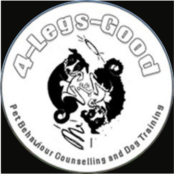Of course, people and dogs have been living together for at least 30,000 years. There is no other species like the dog when it comes to domestication. Dogs and humans effectively domesticated each other and the way we came to cohabit is unique – dogs are now so adapted to living with us that the kitchen and the sofa have become their ecological niche. It has been a mutually beneficial relationship based around survival with some researchers going as far as to say that we, as a species, would not have got to where we are without dogs because our ability to hunt cooperatively with them gave us an evolutionary boost. Dogs are just so tuned into us. Research in Hungary has demonstrated their unique ability to observe into the right hand side of our faces because this is the side that reveals our emotional state. Further researcher from the UK and US have found that dogs have even evolved muscles around their eyes which allow them to make expressions that particularly appeal to humans. This ability to do ‘puppy-dog eyes’ has helped dogs bond with us.
So, dogs and people helped each other to hunt and then shared the quarry, both benefiting. As human society became more sophisticated and complex, the working breeds began to develop with dogs helping with more specific tasks, including hunting, herding, guarding and war. These breeds have an inbuilt genetic pre-disposition to these tasks.
Although dogs are here to stay, fewer and fewer of us are doing jobs that require the help of a dog and they are now mostly pets living in the house. The advent of commercial pet food 50-60 years ago has supported this trend. These days, dogs are more likely to be bred for money, looks, or a hypoallergenic coat, although vestiges of the working drive is usually still present.
Back in the day, there was little impetus or pressure to train dogs but perhaps there should have been. Barbara Woodhouse came on the scene in 1970’s as the first celebrity dog trainer. She is increasingly recognised as the first person to suggest that pet dogs need to be trained. Whilst her methods are now seen as ‘old skool’ there is still respect for Barbara within the profession
From this point, dog training followed a line based on the need to ‘dominate’ your dog.

Dominance-based training methods, as advocated by some dog trainers, assume that many problem behaviours are motivated by an inherent desire for that individual to be ‘dominant’. They often focus on suppressing the unwanted behaviour by using harsh training methods. These training methods can often appear to work but the results are often short-lived, as the suppressed behaviour is likely to rear its ugly head again, possibly worse than before. This can also be dangerous, for example, if fear is the underlying emotion prompting aggressive behaviour then harsh training methods are likely to frighten the dog still further and they may react with more extreme aggression or simply ‘shut down’. A ‘shut down’ dog may no longer be aggressive, but they are certainly not happy or ‘cured’.
In the UK and America towards, the end of the 80’s, a more enlightened type of dog trainer started to appear together with the first behaviourists. The clicker training ‘revolution’ came out of the need to use hands off training with the large marine mammals and spread to dog training from there via the likes of Karen Pryor and Ken Ramirez. Clinical animal behaviourists have studied dog behaviour in depth, including the way dogs behave naturally (ethology), the developmental stages a puppy goes through to become an adult and the modern science of learning theory. Understanding of learning theory has produced the most effective training methods which also happen to be kind.
As a point of interest, lots of dog training methods work – consistency is the main constituent – but there are more and less ethical and effective methods.
Good trainers and behaviourists also need to study human behaviour to enable effective communication with the owner. So rather than simply say ‘he’s being dominant’ and slapping the dog down, we look at the whole situation and make recommendations based on the complete picture – and it works. The more scrupulous of us in the industry are trying to ‘self-regulate’ through the Animal Behaviour and Training Council (abtcouncil.org.uk) with uniform levels of competence and certified standards. The ABTC lists qualified trainers and behaviourists enabling dog parents to access the help they need in their area.
